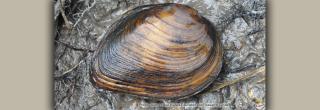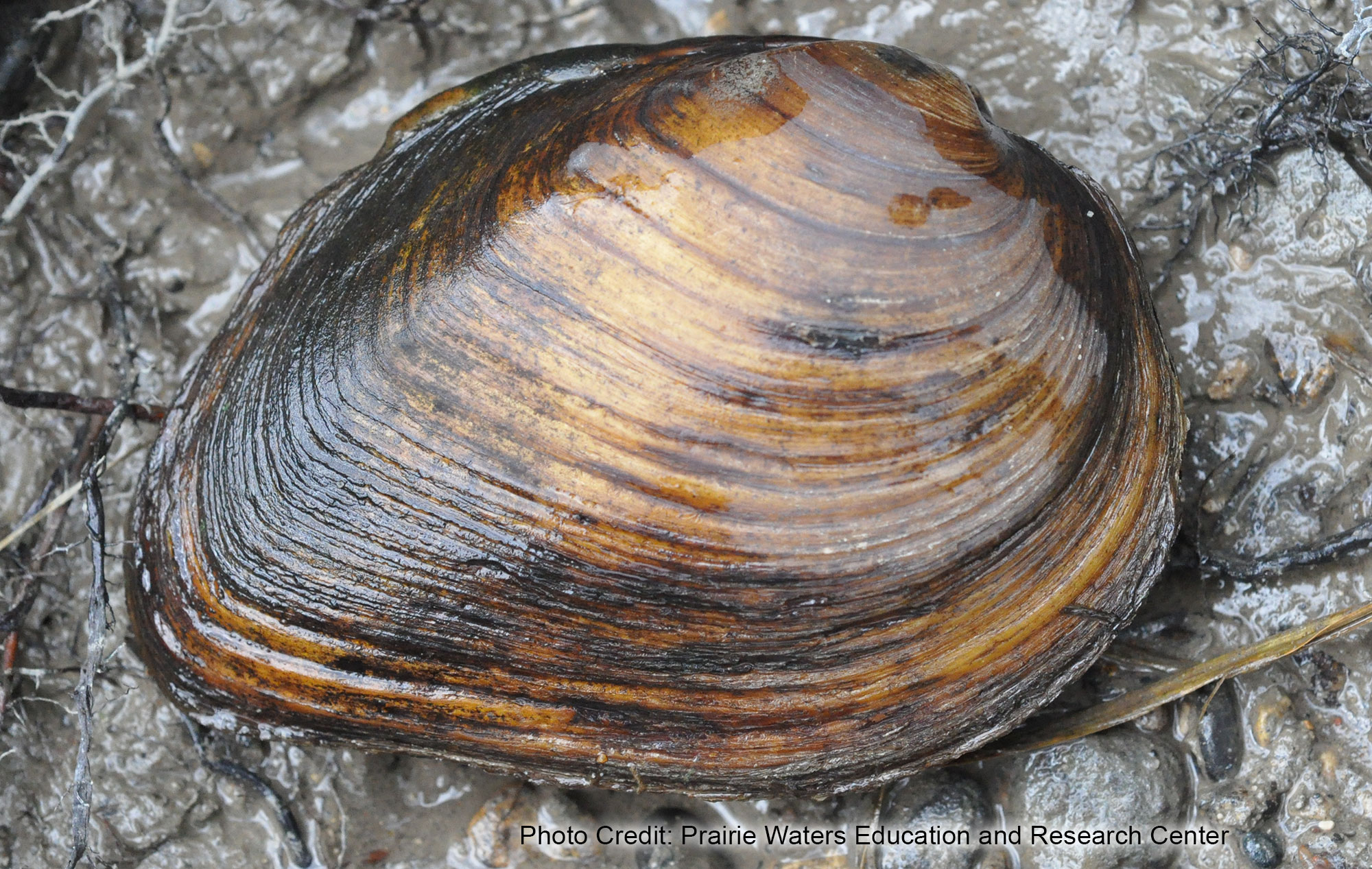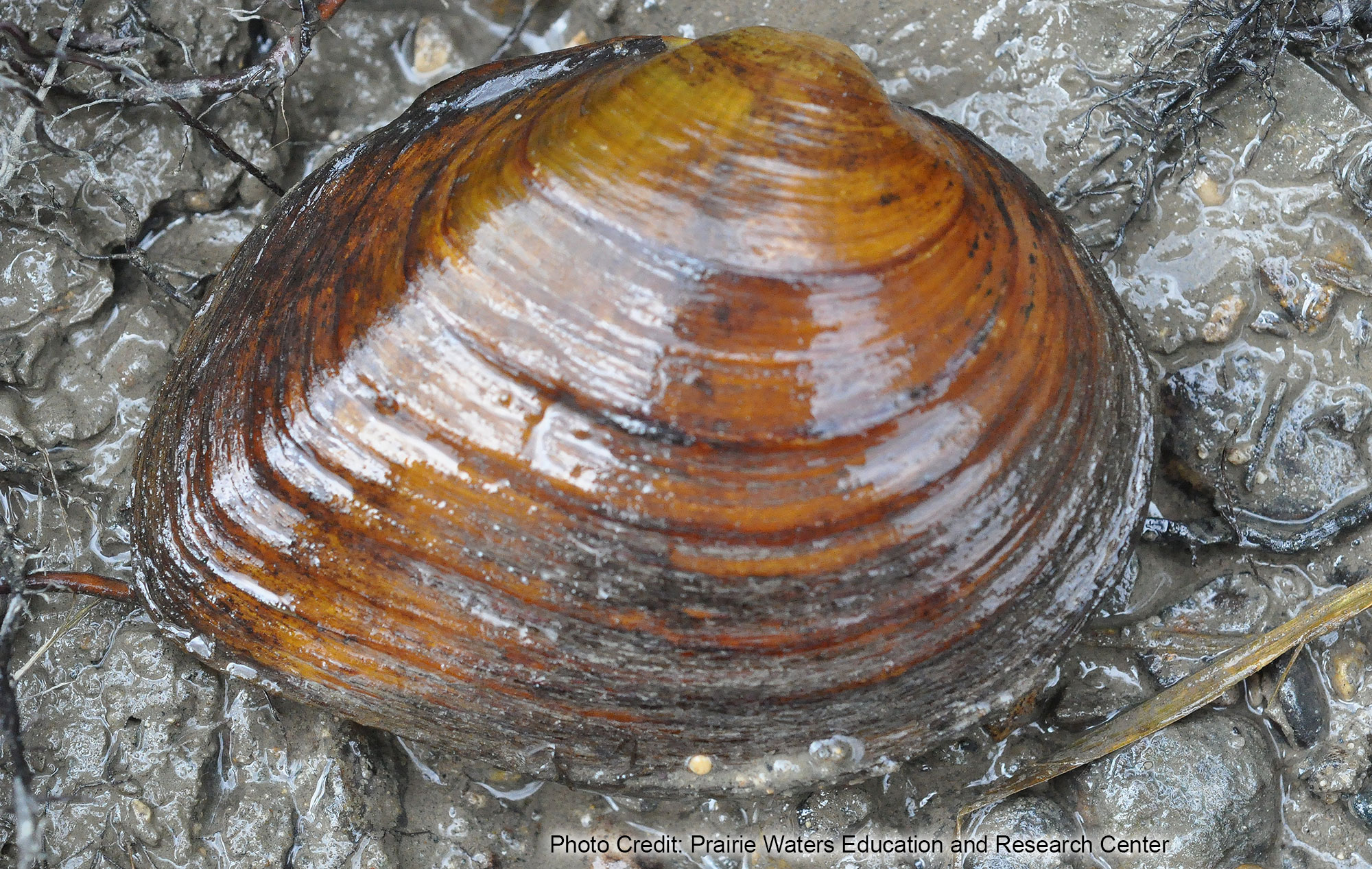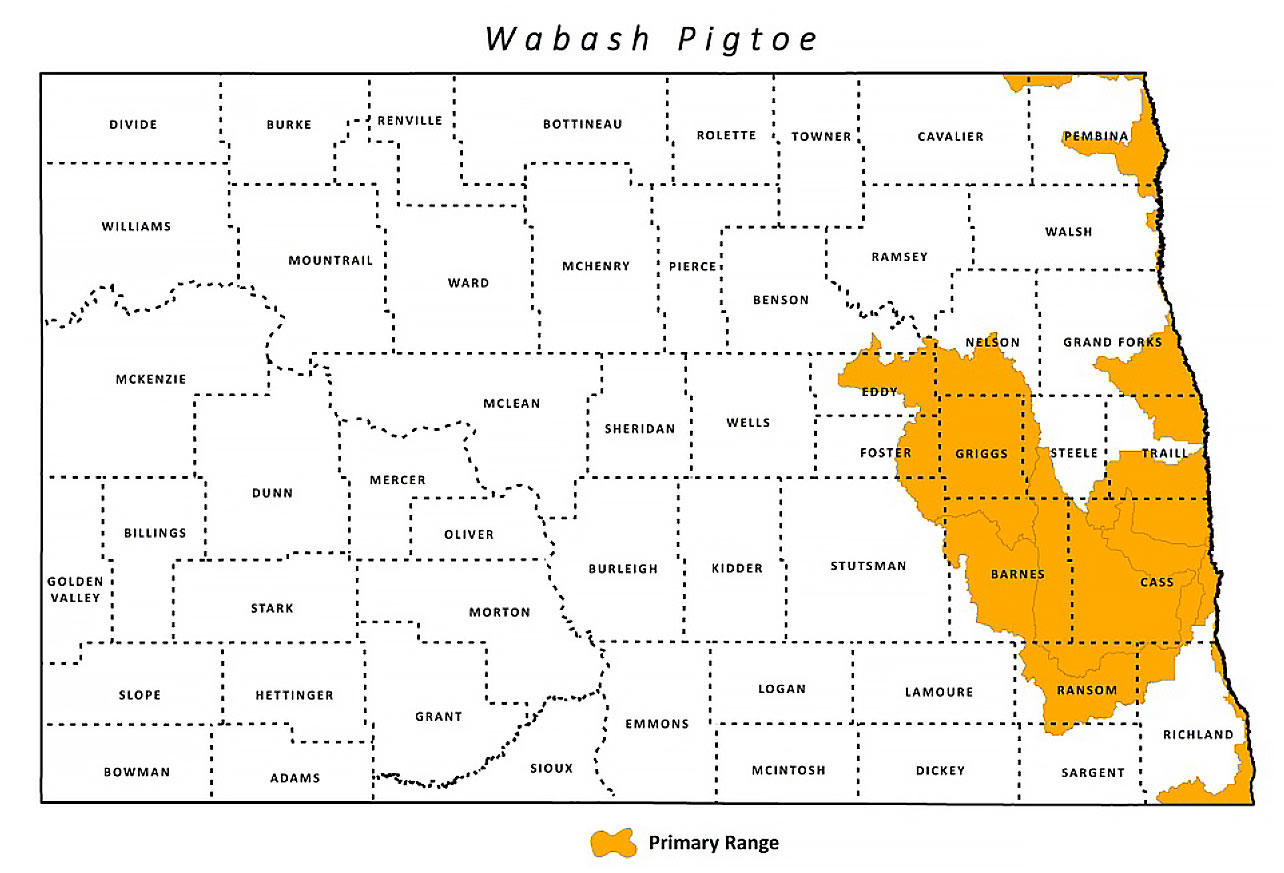
Wabash Pigtoe
| Scientific Name | Fusconaia flava |
|---|---|
| General Description | The shell is up to 3 inches in length. The shape is variable, but generally thick and compressed. Commonly a triangular shape. Younger individuals yellow in color with faint green rays, becoming dark brown with age. |
| Status | Year-round resident. |
| Abundance | Locally common. |
| Primary Habitat | Prefer large rivers with a gravel substrate. In North Dakota confined to larger rivers. |
| Federal Status | None. |
| Reason for Designation | Changes in land use around these rivers, most notably agriculture, and impoundment of river systems may impact freshwater mussel populations. This species is protected from commercial harvest. |
Images


(Photos courtesy of Prairie Waters Education and Research Center - Valley City University)
Locations and Conditions of Key Habitat
Preferred Habitat
Prefer large river systems with channel width greater than 11 m. The river substrate is normally mud or sand.
Key Areas and Conditions for Wabash Pigtoe in North Dakota
Found only in the Red and Sheyenne rivers. It is found in the highest concentrations in the section of the Sheyenne River in Ransom County.
Problems Which May Affect this Species
Habitat
Impoundment of the Red River and its tributaries have changed the flow regime and increased sediment deposits, making many areas in the river unsuitable to this species. Impoundments also block movement of host fish needed for reproduction and dispersal. Agricultural practices within the basin have reduced suitable habitat in the river. Runoff from treated fields into waterways decreases water quality. Ditches used to drain wetlands and fields contribute to run-off and sedimentation in the Red River and its tributaries.
Other Natural or Manmade Factors
The Wabash Pigtoe is considered a commercially valuable species. It is presently illegal to collect mussels for commercial use in North Dakota, but this practice may occur in parts of its range. This may contribute to an already declining population.
The release of water from Devils Lake changing the water chemistry of the Sheyenne River is a potential threat.
Research and Survey Efforts
Current Research or Surveys
- No current research or survey efforts are on-going in this species range.
Previous Research or Surveys
- Cvancara conducted a state-wide survey of the mussels of North Dakota in 1978.
- The North Dakota Game and Fish Department revisited Cvancara’s sites in 1990.
- Valley City State University revisited Cvancara’s sites and surveyed additional sites in 2008.
- The NDDH conducted freshwater mussel surveys for state waters as a segment of its Index of Biotic Integrity (IBI) work.
Additional Research or Surveys Needed
- A monitoring protocol for mussel species has been developed for the North Dakota Game and Fish Department under the SWG program. Implementation of this monitoring protocol is a future goal.
Management Recommendations
- Develop buffers along riparian areas.
- Work with partners to reduce the use of chemical near waterways.
- Work with partners to reduce wetland drainage.
- Remove river impoundments where possible.
- Work with partners to maintain instream flows.
Monitoring Plans
A monitoring protocol has been developed for the North Dakota Game and Fish Department under the SWG program. Implementation of this monitoring protocol is a future goal.
2005-2015 Progress
SWG T-24-R A Two Phase Population Survey of Mussels in North Dakota Rivers provided important information on the distribution of this species. Work to implement a monitoring protocol for mussels species will is a goal of the revised Wildlife Action Plan.

Note: A listing of works consulted when compiling the information on this page may be found in the 2015 State Wildlife Action Plan.
